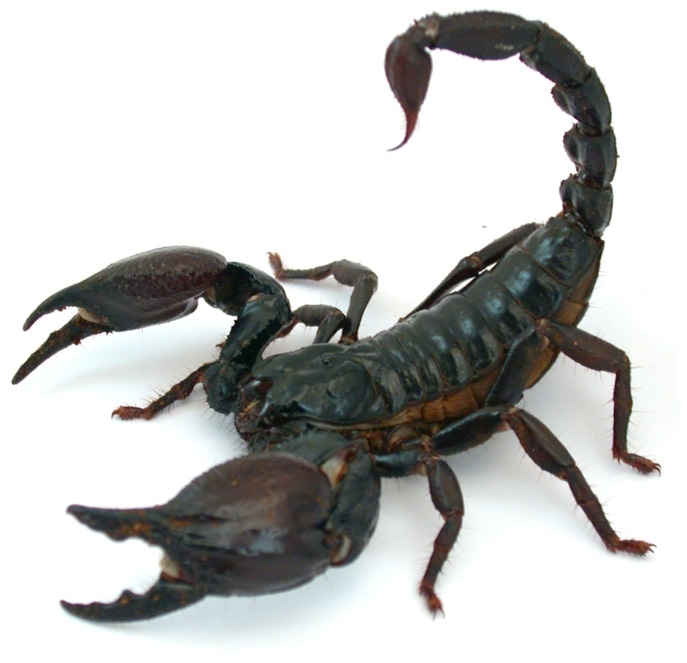A team of international researchers discovered an inventive, animal-friendly means for investigating venom genes. The new method enables determining unique venom production of a broad range of venomous animals that have been barely researched.

Scorpion species Heterometrus sp., also called the Asian forest scorpion was used in the study. Image Credit: Arie van der Meijden.
Researchers from VU Amsterdam and the University of Porto collaborated with Naturalis Biodiversity Center and Leiden University and succeeded in identifying the blueprints for proteins in scorpion venom. The blueprints contemplate the genes active in venom production.
The venom gland
The technique employed is known as transcriptomics—a process where patterns of gene expression can be analyzed. This enables the scientists to see the genes that are active during venom production.
This approach is unique as the technique was used successfully for the first time on the actual venom rather than the venom gland tissue. This eliminates the necessity to sacrifice animals to analyze the gene expression of the venom gland. This technique provides numerous new possibilities for venom research.
Which genes are active?
“Thanks to this technique, we can very precisely see which genes are active at various moments during the venom production. This snapshot offers the very first possibility to study how various influences, such as nutrition, season, and age, influence the venom production in a single individual.”
Freek Vonk, Researcher, Naturalis Biodiversity Center
Freek Vonk is also a professor at the VU.
This indicates that is now possible to analyze the variations existing in the venom and the factors that can influence these variations. Vonk elaborates, “Every venom contains tens to more than hundreds of different venomous substances, also called toxins, which are produced by the venom gland. After a bite or sting, these can have a toxic effect on various systems, such as the nerve endings or blood circulation.”
Cell remains
“Venom is produced by venomous animals in different ways”, states Mátyás Bittenbinder, venom expert and Ph.D. student at Naturalis and the VU.
Some animals, such as snakes and centipedes, have venom-producing cells that issue their venom to the storage space in the venom gland in small vesicles, which results in a relatively ‘clean’ venom. Other animals, such as scorpions, allow their venom gland cells to be ‘cut off’ in pieces or even completely disintegrate in the venom storage space and therefore produce a venom that contains many cell remains.”
Mátyás Bittenbinder, Venom Expert, Naturalis Biodiversity Center
Bittenbinder adds, “Those cell remains contain the substances on which we can perform transcriptomics: mapping which genes are activated to produce which proteins.”
The manner of venom production probably explains why the new technique does not work on snakes. Conversely, the technique now makes it possible to study the venom variations in a large number of venomous animals that have scarcely ever, if at all, been studied, such as scorpions, fish, and even the platypus.”
Arie van der Meijden, Researcher, University of Porto
Arie van der Meijden is the inventor of the innovative approach.
Better research into venom composition
Moreover, the technique is much simpler, perfect, and more specific than earlier utilized techniques for venom research. Arie van der Meijden concludes, “As a result of this, we can do even better research into how animals produce venom. And that is particularly useful; the toxins in the venom are an important source for finding new, potential drugs, such as drugs to treat cardiovascular diseases.”
Source:
Journal reference:
Vonk, F. J., et al. (2021) A non-lethal method for studying scorpion venom gland transcriptomes, with a review of potentially suitable taxa to which it can be applied. PLoS ONE. doi.org/10.1371/journal.pone.0258712.